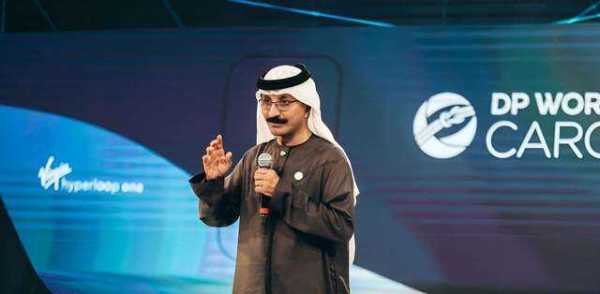
Michal Divon sat down with Sultan bin Sulayem, Chairman of DP World, for an insightful conversation about the visionary projects that have shaped Dubai’s identity, including the iconic Palm Jumeirah and DP World. Reflecting on the 1980s — a pivotal era for the Gulf — he shared how Dubai embarked on ambitious initiatives that not only transformed the city but also positioned it as one of the most connected hubs globally. He shares the challenges behind constructing the Palm Jumeirah, Dubai’s first artificial island, and how it almost cost him his life.
Sultan bin Sulayem is an icon in Dubai, his projects now spanning the globe. Alongside the emirate’s rulers, he helped pave the way for a Dubai which many once thought no more than a dream.
From the Jebel Ali Port and DP World to the Palm Jumeirah, he has been at the heart of the emirate’s radical development from a desert coastal town into a global metropolis.
“When we started, the port was there, but there was nothing, no buildings in the desert around it,” he recalls.
He lays the credit at the feet of Sheikh Mohammed bin Rashid Al Maktoum, Vice-President and Prime Minister of the UAE and Ruler of Dubai, and his late father, Sheikh Rashid bin Saeed Al Maktoum. “He [Sheikh Mohammed] has belief in Dubai more than anybody,” said bin Sulayem. “This is very important if you believe you can achieve anything,” he says, the city now boasting the likes of Emirates airline, now a powerhouse on the world stage.
“In the 80s, it was a very critical period in the Gulf countries, working out how we make Dubai a better place for trade,” he recalls. “Dubai today is the most connected city in the world, where you can reach anywhere you want in the world, whether to take cargo or whether to bring cargo from or to ship in any mode of transportation.”
One of the most significant projects to change the face and economy of Dubai was the ambitious Palm Jumeirah island. “I always say, what drives Dubai is necessity. Necessity is the mother of innovation,” he says, and the need for more beachfront as Dubai’s coastline was taken up by the likes of ports, harbours and power plants, drove the idea of the man-made island.
Tasked with exploring how the project could come to life, he sought out the right designers, architects, engineers and more, from around the world, to make it happen. “The shape was like a sun”, in the first iterations, he tells us, as the aim was to maximise the island’s coastline.
He searched globally for the right team to put the project into action but it was the sand which would also throw up new challenges to the concept, the first round seeing bin Sulayem sinking in the sand which showed the critical need for something more dense.
“I asked my engineers, and they told me, actually, we knew this will happen, because the desert sand is dry, porous, fine, and the minute water touches it becomes quicksand,” he explains, a project he now admits was “very challenging”.
It took until 2001 for the concept that was born many years before, to start taking shape. “We wanted to know so much about this project. We wanted to know what’s going to affect the beach, the marine life, the coral,” he explains.
Today, Dubai continues to advance rapidly, like no other nation in the world. The biggest changes have been spurred by the pandemic, he says. “The supply chain changed. We realised how fragile the supply chain is,” he says, and connectivity remains at the core of the emirate’s planning. “Connectivity is very important, and today you will see that technology, AI, many of these technologies, we are using them today, whatever supports connectivity,” he explains.
Technology in Dubai’s smart city, will continue to lead the way as the emirate advances. “We need to make very accurate decisions [and] we can only do that with technology. The future will be quantum computers, which has, for example, a huge power in giving results and numbers that you need today, so we have a lot of information, we convert the information we have into tools for decision-making. And that’s why our decisions, when we make them, are resilient as we have thought them through,” he explains.
But the new technology comes with pros and cons. “It’s an opportunity, and a risk,” he admits. “The risk is always what is in the technology that could disrupt our business. This is something that we all are concerned about. Technology will continue to change. It will continue impact us. The key is, how do we become proactive and anticipate this?”